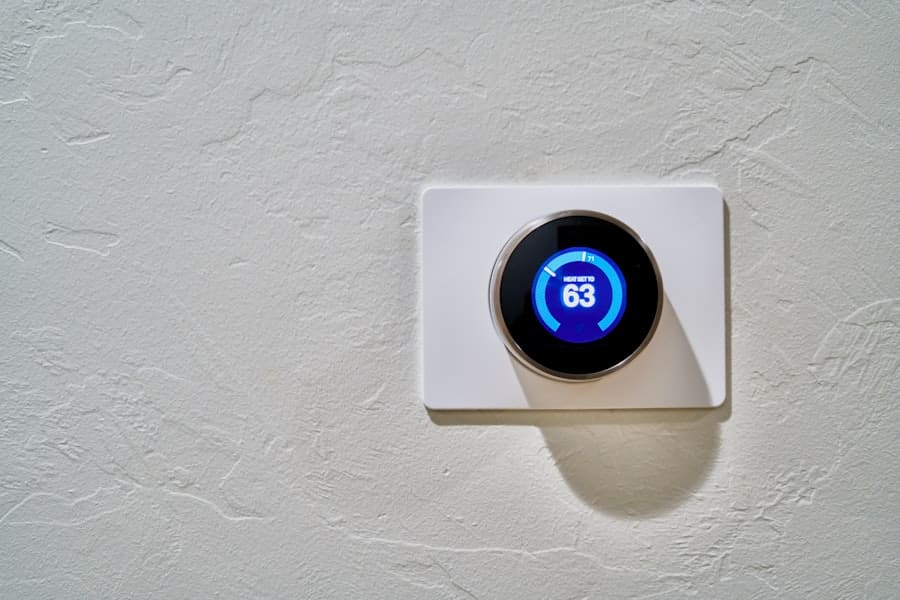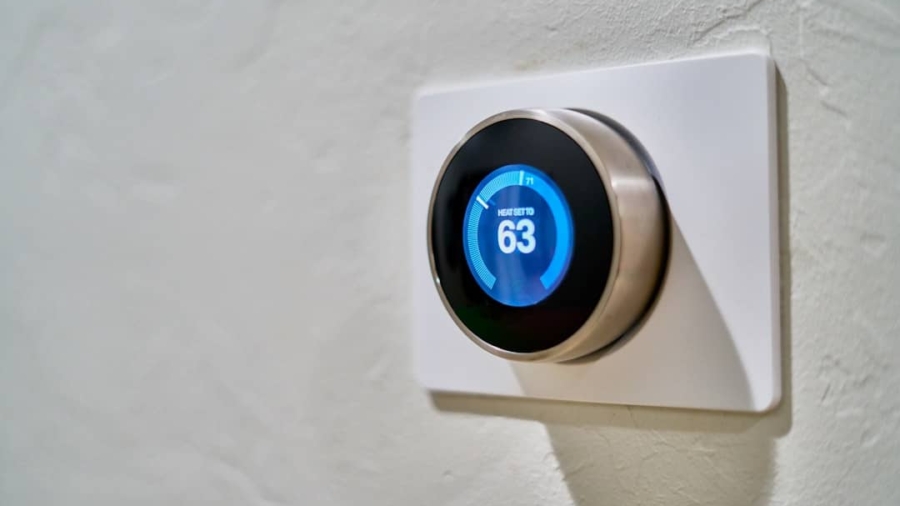Home energy management has emerged as a critical component in the quest for sustainable living and energy efficiency. As households increasingly seek to reduce their carbon footprints and lower energy costs, the need for effective energy management systems has never been more pronounced. Home energy management systems (HEMS) encompass a range of technologies and strategies designed to monitor, control, and optimize energy consumption within residential settings.
These systems not only empower homeowners to make informed decisions about their energy use but also contribute to the broader goal of reducing strain on the electrical grid during peak demand periods. The integration of advanced technologies, particularly artificial intelligence (AI), has revolutionized the landscape of home energy management. AI-driven solutions offer unprecedented capabilities in analyzing energy consumption patterns, predicting usage trends, and automating energy-saving measures.
As a result, homeowners can enjoy enhanced comfort, convenience, and cost savings while simultaneously playing a role in promoting environmental sustainability. The following sections will delve into the intricacies of peak load times, the transformative role of AI in home energy management, and the various applications of AI that are reshaping how we interact with our energy systems.
Key Takeaways
- Home energy management is crucial for optimizing energy usage and reducing costs.
- Peak load times are periods of high energy demand, often leading to increased costs and strain on the grid.
- AI plays a key role in home energy management by analyzing data and making real-time adjustments.
- AI-driven smart thermostats can learn and adapt to the household’s energy usage patterns, leading to more efficient heating and cooling.
- AI-enabled energy usage prediction helps homeowners anticipate peak load times and adjust their energy usage accordingly.
Understanding Peak Load Times
Peak load times refer to specific periods during which the demand for electricity surges significantly, often leading to increased strain on the electrical grid. These times can vary based on geographic location, seasonal changes, and even local events. For instance, in many regions, peak load times occur during hot summer afternoons when air conditioning units are working overtime to cool homes.
Similarly, winter evenings may see spikes in demand as families turn on heating systems and engage in evening activities that require electricity. Understanding peak load times is crucial for both utility companies and consumers. Utilities often implement demand response programs to manage these peaks effectively, incentivizing consumers to reduce their energy usage during high-demand periods.
For homeowners, being aware of peak load times can lead to significant cost savings by shifting energy-intensive activities—such as running dishwashers or laundry machines—to off-peak hours when electricity rates are lower. By leveraging this knowledge, consumers can not only save money but also contribute to a more stable and efficient energy grid.
The Role of AI in Home Energy Management

Artificial intelligence plays a pivotal role in modern home energy management by providing sophisticated tools for data analysis and decision-making. AI algorithms can process vast amounts of data from various sources, including smart meters, weather forecasts, and historical consumption patterns. This capability allows for real-time monitoring and analysis of energy usage, enabling homeowners to identify inefficiencies and optimize their consumption habits.
Moreover, AI enhances the ability to predict future energy needs based on historical data and external factors. For example, machine learning models can analyze past usage patterns alongside weather data to forecast how much energy a household will require on a given day. This predictive capability is invaluable for both consumers and utility providers, as it allows for better planning and resource allocation.
By integrating AI into home energy management systems, homeowners can achieve a level of efficiency that was previously unattainable, leading to reduced costs and a smaller environmental impact.
AI-Driven Smart Thermostats
One of the most prominent applications of AI in home energy management is the development of smart thermostats. These devices go beyond traditional programmable thermostats by utilizing machine learning algorithms to learn a household’s unique heating and cooling patterns over time. For instance, a smart thermostat can recognize when occupants are typically home or away and adjust the temperature accordingly to maximize comfort while minimizing energy use.
By continuously analyzing these variables, the thermostat can optimize heating and cooling schedules in real-time. Some advanced models even integrate with other smart home devices, allowing for coordinated control of heating systems based on occupancy or time-of-day settings.
This level of automation not only enhances user convenience but also significantly reduces energy consumption during peak load times.
AI-Enabled Energy Usage Prediction
The ability to predict energy usage is one of the most transformative aspects of AI in home energy management. By employing advanced algorithms that analyze historical consumption data alongside real-time inputs, AI systems can forecast future energy needs with remarkable accuracy. This predictive capability allows homeowners to make informed decisions about their energy use, such as when to run high-demand appliances or adjust heating and cooling settings.
For example, an AI-enabled system might analyze data from previous months to determine that a household typically uses more electricity on weekends due to increased activity levels. Armed with this knowledge, homeowners can proactively adjust their energy consumption strategies—perhaps by scheduling laundry or dishwashing for off-peak hours or reducing heating during peak times. This not only leads to cost savings but also helps alleviate pressure on the electrical grid during critical demand periods.
AI-Powered Appliance Control

AI-powered appliance control represents another significant advancement in home energy management. Smart appliances equipped with AI capabilities can communicate with each other and with central home management systems to optimize their operation based on real-time data. For instance, a smart washing machine might delay its cycle until off-peak hours when electricity rates are lower or when solar power generation is at its peak.
Moreover, these appliances can learn from user behavior and preferences over time. If a homeowner typically runs the dishwasher after dinner, an AI-enabled system can automatically adjust the appliance’s operation schedule to align with this routine while considering peak load times. This level of automation not only enhances convenience but also ensures that appliances operate at optimal efficiency, reducing overall energy consumption.
AI-Integrated Renewable Energy Integration
As more homeowners turn to renewable energy sources such as solar panels and wind turbines, the integration of these technologies into home energy management systems becomes increasingly important.
For example, an AI system can analyze cloud cover predictions to estimate solar power generation for the day ahead.
Furthermore, AI can facilitate the intelligent distribution of renewable energy within the home. When solar panels generate excess electricity during peak sunlight hours, an AI-driven system can decide whether to store this energy in batteries for later use or sell it back to the grid at favorable rates. This capability not only maximizes the benefits of renewable energy but also contributes to grid stability by reducing reliance on fossil fuels during peak demand periods.
Benefits of AI in Managing Home Energy During Peak Load Times
The benefits of incorporating AI into home energy management systems are particularly pronounced during peak load times. By leveraging predictive analytics and real-time monitoring capabilities, homeowners can significantly reduce their energy consumption during these critical periods. This not only leads to lower utility bills but also helps mitigate the environmental impact associated with high-demand electricity generation.
Additionally, AI-driven systems can enhance grid reliability by enabling demand response strategies that encourage consumers to shift their usage patterns during peak times. For instance, utility companies may offer incentives for homeowners who reduce their consumption during designated peak hours, effectively balancing supply and demand on the grid. By participating in such programs, consumers not only save money but also contribute to a more sustainable energy ecosystem.
In conclusion, the integration of artificial intelligence into home energy management represents a paradigm shift in how we approach energy consumption at the residential level. From smart thermostats that learn user preferences to predictive analytics that forecast future needs, AI technologies empower homeowners to take control of their energy usage while promoting sustainability and cost savings. As we continue to navigate the challenges of climate change and resource scarcity, embracing these innovations will be essential for creating a more efficient and resilient energy future.
If you are interested in how technology can improve your home life, you may also want to check out this article on the best software for interior design in 2023. It discusses how innovative software can help you create the perfect living space.
FAQs
What is peak load times in home energy management?
Peak load times in home energy management refer to the periods of the day when energy consumption is at its highest. This usually occurs during the morning and evening when people are getting ready for work or school, and when they return home and start using appliances and electronics.
How does AI help in managing home energy during peak load times?
AI helps in managing home energy during peak load times by analyzing historical energy usage data, weather forecasts, and other relevant factors to predict when peak load times are likely to occur. It can then adjust the home’s energy usage by controlling smart devices such as thermostats, lighting, and appliances to reduce energy consumption during these peak periods.
What are the benefits of using AI for managing home energy during peak load times?
Using AI for managing home energy during peak load times can help reduce energy costs, minimize strain on the electrical grid, and lower the environmental impact of energy consumption. It can also provide convenience for homeowners by automatically optimizing energy usage without the need for manual intervention.
What are some examples of AI-powered devices for managing home energy during peak load times?
Examples of AI-powered devices for managing home energy during peak load times include smart thermostats that can learn and adapt to the household’s schedule, smart lighting systems that adjust brightness and usage based on occupancy and natural light, and smart appliances that can be programmed to operate during off-peak hours.

